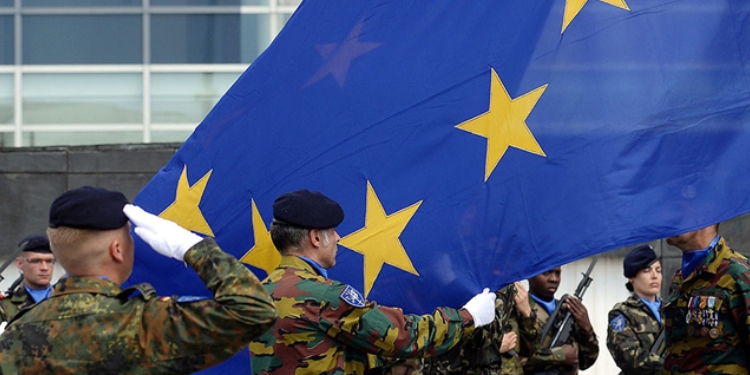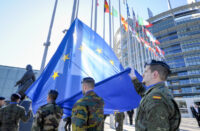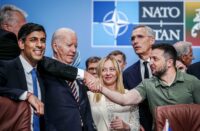Last month the US government announced that its military budget for 2020 will be a colossal $738 billion.
The US military is one of the largest polluters in history, consuming more liquid fuels and emitting more climate-changing gases than most medium-sized countries. But only a minority of environmental campaigns or peace groups focus on war and militarism.
This horrendous pollutant is simply exempt from climate treaties, such as Kyoto. Ignored by governments and NGOs, it won’t be ignored by the environment and the climate. How could it be? As Judith Deutsch writes in a recent article on “Counterpunch,” “the B-52H Bomber holds 47,975 gallons of fuel and still requires mid-air refueling. The F-15 [fighter plane] uses 25 gallons/minute or 1580 gallons/hour.”
NATO’s summit declaration in London on 4 December announced a review of its war capabilities but also mentioned, for the first time in an official document, “China’s growing influence and international policy.” The language towards China is more cautious than towards Russia. But both the reorientation of NATO and China’s growing power are expressions of historical upheavals.
The coming decade will see dramatic change. China’s economic output will surpass that of the United States. In many technical areas China is already the vanguard. In media interviews NATO’s secretary-general, Jens Stoltenberg, did not state that China is the enemy, but it soon will be.
However, when it comes to military spending, China’s military budget is estimated at $250 billion, Russia’s at $60 billion. While huge, these remain significantly less than NATO’s expenditure of $1 trillion.
As the following table shows, the EU too is embracing militarism with gusto; and Ireland has agreed to contribute up to 2 per cent of its GDP yearly—that’s €6 billion!—through its membership of PESCO.
2004–06: €65 million
2014–20: €6,585 million
2021–27: €43,995 million
NATO needs a bogeyman to justify its militarisation, and Putin is at present the culprit. Russia’s retaking of the Crimea is the great crime. No reference is made to the $5 billion invested by the CIA in carrying out a fascist coup in Ukraine; forgotten is how the West broke the agreement made between Reagan and Gorbachev that after German unification NATO would not expand east of the old GDR borders.
Nothing less than Russia’s total surrender will satisfy the NATO powers. Conciliation will not suffice. It was therefore wise, for strategic and historical reasons, for Moscow to reclaim Crimea. Besides, it is overwhelmingly Russian.
With sycophantic Western media, NATO doesn’t need to justify the recent manoeuvres in Poland and neighbouring states, nor the naval exercises in the Baltic, nor the stationing of US and German tank battalions permanently in Lithuania.
And as we prepare for the 75th anniversary of the defeat of German fascism by the Red Army and its allies on 8 May, don’t expect a journalistic eyebrow in the West to be raised at NATO’s manoeuvre “Defender 2020,” which will see 38,000 soldiers and their equipment congregate on Russia’s border.
While this is officially a US exercise, NATO states are rehearsing the march towards a possible joint war against Russia. Soldiers from a total of eighteen countries are actively involved. The preparations have long been under way, and the first troop movements are expected in February.
20,000 American soldiers will receive war material from four special warehouses: in the Netherlands, in Belgium, and two in Germany. These warehouses contain tanks, howitzers and armoured troop transporters—in total, 13,000 pieces of equipment, which are to move eastwards towards the Russian border.
Rest assured that Shannon and Aldergrove airports will play their part.
Its impact on international relations can only be detrimental. And the moving of a massive war machine across Europe will inevitably have devastating consequences for the climate.
It is essential that we seek to prevent Ireland being involved in these catastrophic developments.






